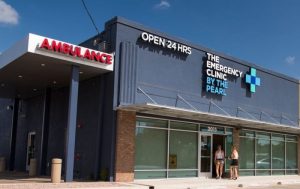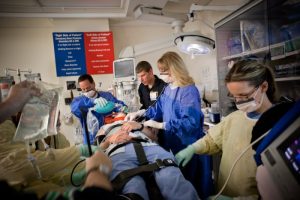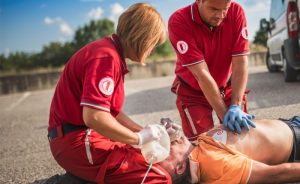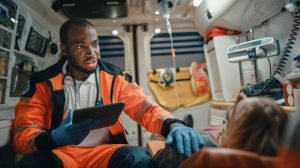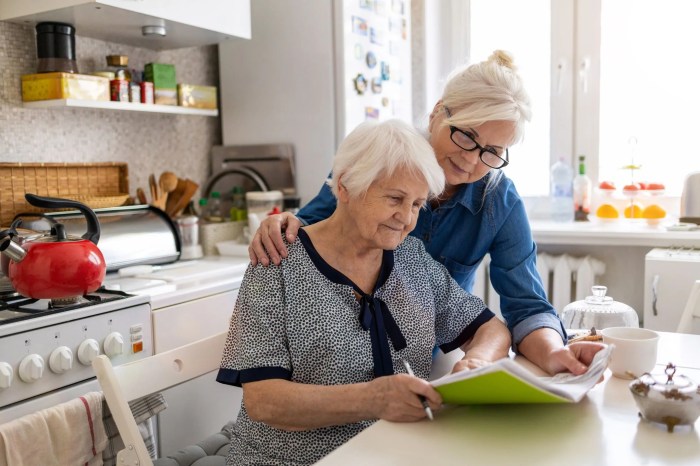
Embark on a journey through the world of Emergency Care Services for Seniors, where specialized care meets the unique needs of older adults in critical situations.
Explore the challenges, innovations, and best practices that shape emergency care for the elderly population.
Understanding Emergency Care Services for Seniors
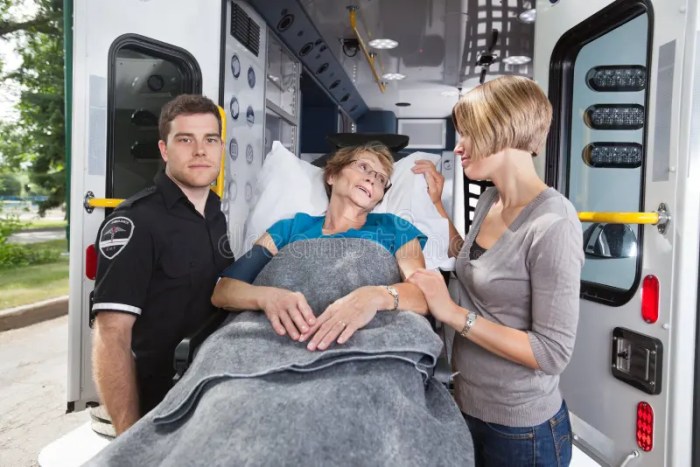
As seniors age, their healthcare needs become more complex, making tailored emergency care services essential to ensure their safety and well-being.
The Importance of Tailored Emergency Care for Older Adults
Seniors often have multiple chronic conditions, such as heart disease, diabetes, or arthritis, which can complicate emergency situations. Tailored care takes into account these underlying health issues, ensuring appropriate treatment and a faster recovery.
Common Medical Emergencies Seniors May Face
- Heart attacks: Seniors are at a higher risk of heart attacks due to age-related changes in the cardiovascular system.
- Falls: Falls are a leading cause of injury among older adults and can result in fractures or head injuries.
- Stroke: Seniors have an increased risk of stroke, which requires prompt medical attention to minimize long-term effects.
- Respiratory issues: Conditions like pneumonia or chronic obstructive pulmonary disease (COPD) can lead to respiratory emergencies in seniors.
Challenges in Providing Emergency Care to the Elderly Population
One of the main challenges in providing emergency care to seniors is the need for specialized training and knowledge in geriatric medicine. Older adults may present with atypical symptoms or react differently to treatments, requiring healthcare providers to be well-versed in senior-specific care.
Specialized Senior Emergency Care Facilities

Senior-friendly emergency care facilities are designed to cater to the specific needs of elderly patients, offering specialized services and amenities to ensure their comfort and well-being.
Features of a Senior-Friendly Emergency Care Facility
- Specialized geriatric emergency care teams trained in handling the unique medical needs of seniors
- Quiet and calm environment to reduce stress and anxiety for elderly patients
- Easy access to mobility aids and assistive devices
- Private rooms with comfortable bedding and seating
- Enhanced communication tools for patients with hearing or vision impairments
Comparison with Regular Emergency Rooms
Unlike regular emergency rooms, senior-friendly facilities are specifically tailored to meet the needs of elderly patients, providing a more personalized and comforting experience.
- Specialized staff trained in geriatric care
- Enhanced safety measures to prevent falls and other accidents
- Focus on comprehensive geriatric assessments and care planning
- Collaboration with other healthcare providers to ensure continuity of care
Innovative Technologies in Senior Emergency Care
- Telemedicine for remote consultations and monitoring of elderly patients
- Fall detection systems and wearable devices for real-time tracking of vital signs
- Electronic health records for quick access to patient information and medical history
- Medication management systems to prevent errors and ensure proper dosing
Medical Staff Training and Expertise
Medical staff in senior emergency care facilities require specialized training to effectively handle the unique needs of elderly patients. This training is crucial in ensuring the best possible outcomes for seniors in emergency situations.
Importance of Geriatric Training
- Geriatric training equips medical professionals with the knowledge and skills needed to understand the complexities of aging and how they impact emergency care.
- It helps providers recognize common geriatric syndromes, such as delirium or falls, and develop appropriate treatment plans.
- Understanding the physiological changes that occur with aging allows medical staff to tailor their approach to care and improve patient outcomes.
Best Practices for Dealing with Elderly Patients
- Communicate clearly and effectively with seniors, taking into account any hearing or cognitive impairments.
- Be patient and allow extra time for procedures or explanations, as older adults may require more time to process information.
- Assess for potential medication interactions or polypharmacy issues, as seniors are often on multiple medications that can complicate treatment.
- Involve family members or caregivers in decision-making processes to ensure the best possible care for elderly patients.
Communication and Collaboration in Emergency Situations
Clear communication is crucial in emergency care for seniors as it ensures that all healthcare professionals involved are on the same page regarding the patient’s condition, treatment plan, and any changes in status. Effective communication helps in making quick decisions, minimizing errors, and providing the best possible care for the senior in need.
Significance of Clear Communication
In emergency situations, healthcare professionals such as doctors, nurses, paramedics, and specialists need to communicate efficiently to ensure that the senior patient receives timely and appropriate care. This includes sharing vital information, updates on the patient’s condition, and any changes in treatment plans.
- Using clear and concise language to relay important information
- Utilizing standardized communication tools like SBAR (Situation, Background, Assessment, Recommendation)
- Ensuring that all team members are informed and updated regularly
Collaboration of Healthcare Professionals
In senior emergency cases, different healthcare professionals collaborate to provide comprehensive care to the patient. This interdisciplinary teamwork involves professionals from various fields working together to address the senior’s medical needs and ensure a holistic approach to their treatment.
- Doctors consulting with specialists to determine the best course of action
- Nurses coordinating care and administering treatments as per the medical team’s instructions
- Paramedics providing immediate assistance and transportation to the hospital
Examples of Successful Interdisciplinary Teamwork
An example of successful interdisciplinary teamwork in handling senior emergencies is when a geriatrician, nurse, and physical therapist collaborate to create a personalized care plan for an elderly patient who has suffered a fall. The geriatrician assesses the medical needs, the nurse coordinates care and monitors vital signs, while the physical therapist designs a rehabilitation program to help the patient regain mobility.
In conclusion, the realm of Emergency Care Services for Seniors is a dynamic landscape where compassion, expertise, and technology converge to provide life-saving support for our elderly loved ones.
Popular Questions
What are some key challenges in providing emergency care for seniors?
Some challenges include addressing complex medical conditions, ensuring timely interventions, and accommodating unique needs related to aging.
How do senior-friendly emergency care facilities differ from regular emergency rooms?
Senior-friendly facilities are designed to cater to the specific needs of older adults, such as comfortable environments, specialized medical equipment, and staff trained in geriatric care.
Why is clear communication crucial in emergency care situations involving seniors?
Clear communication helps ensure that all medical professionals understand the unique needs of elderly patients, leading to more effective and coordinated care.

